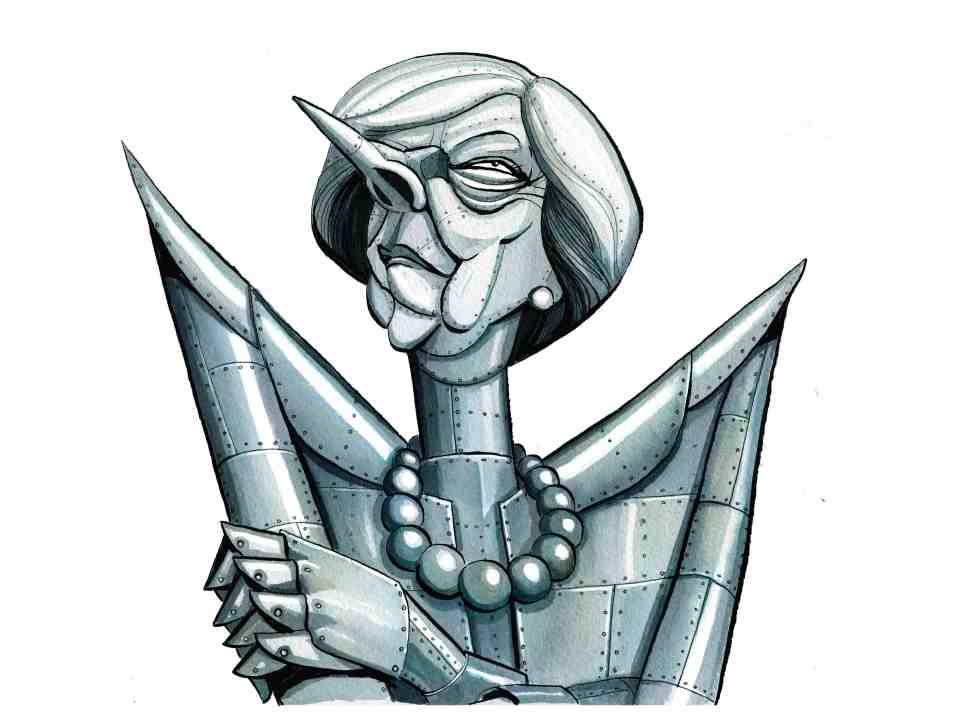‘No negotiation without notification’ has been the EU’s mantra since 24 June last year. Its leaders have been determined that there’ll be no talks before Britain has formally submitted its Article 50 letter, starting the two-year countdown to this country leaving the union. Even now, after Theresa May has set out her Brexit plans with a decent amount of detail, the EU is sticking to this line. Why? Because it wants Britain to be negotiating against the clock.
Despite this, there have been informal conversations over the past six months that have helped forge the Brexit strategy that May set out on Tuesday. EU leaders’ insistence that they won’t compromise on the ‘four freedoms’ means that the government has decided against any cute attempts to reconcile single-market membership with an interpretation of the free movement rules stringent enough to satisfy British voters.
James Forsyth and Liam Halligan join Isabel Hardman to discuss Theresa May’s Brexit plans:
This is sensible. Britain’s desire for greater control of immigration was never going to be compatible with the EU’s — particularly the European Court of Justice’s — understanding of free movement. Trying to square this circle would have simply taken up valuable negotiating time to no good end.
The government’s emphasis on Britain’s security contribution in these negotiations is another product of these conversations. Theresa May first met President François Hollande days after the Nice attack. At dinner, conversation was initially about how Britain might help France in dealing with the terrorist threat. It then turned to the EU. But, as one of those present recalls, the second discussion was far more civil and constructive than it would have been without the first one. You can hardly ask for someone’s help in fighting terrorism then tell them that you want to destroy their economy.
To central and eastern Europe, Britain’s deterrent to Russian aggression is vital. In a few months we are likely be the only major western military power unequivocally opposed to the idea of Russia dominating its neighbours. One minister who campaigned vigorously for Remain says that the attitude of these countries to Brexit Britain has shifted dramatically since Donald Trump won in the US and François Fillon, who wants to scrap sanctions against Russia, won the Republican nomination for the French presidency.
Perhaps the most useful thing that the May government has learned in the last six month is what other EU countries fear. Since the referendum, parliaments all over Europe have been setting up committees to cover the negotiations. On their visits to London, the assurance they have most frequently sought from British ministers and officials has been that this country won’t turn itself into Singapore West, slashing taxes and regulation to attract business. This is why both Philip Hammond and May herself have made clear that this is indeed how the UK will respond if there is no reasonable offer from the EU.
May’s speech this week was an attempt to take back control of the Brexit negotiations. She wanted to show that her government does have a plan. She also wanted to ensure that she is not dependent on the EU for every-thing in her strategy; EU leaders can’t stop the UK leaving the single market or the customs union. She can deliver a clean Brexit, with or without their agreement. Her team are acutely aware that David Cameron was dependent on the EU for every-thing in the renegotiation and he wasn’t prepared to walk away. They are determined not to fall into that trap. Hence her willingness to declare that no deal is better than a bad deal — that, in other words, she is prepared to see the UK trade with the EU on World Trade Organisation (WTO) terms if necessary.
So far, this approach is delighting the Tory Brexiteers. Despite having campaigned, though without much vigour, for Remain, she is not trying to keep Britain as some kind of EU associate member. In the government’s internal negotiations, the Brexiteers have won on nearly every point. When May became PM, there were still senior cabinet ministers who hoped to keep Britain somehow inside the single market, while leavers who talked of getting out of the customs union were rebuked by Downing Street. Now she is making clear that we are leaving the single market and she is prepared to go WTO if need be.
If the May strategy works, the Channel won’t suddenly become an ocean. What she wants is to negotiate a free-trade deal and customs arrangement with the EU that would see ‘the freest possible trade in goods and services between Britain and EU member states’. She also hopes that cooperation will continue, with the UK prepared to pay to take part in various EU programmes. Then there is the security and intelligence work that she has made clear will be maintained, even stepped up, in the wake of an amicable deal.
Even on immigration, the changes might not be as dramatic as the rhetoric suggests. Once control has been taken back and the principle is established that Parliament determines the UK approach to immigration, then the actual policy might be relatively liberal.
I understand that one option under serious consideration at the Home Office would involve EU nationals continuing to receive preferential treatment in the immigration system. There might be some restrictions on numbers, but the presumption would be that EU citizens who have a secure job offer would still be able to come and work here. There is a growing recognition in government that s-everal sectors of the UK economy will still need relatively low-skilled immigration to carry on functioning.
It is not just Theresa May’s premiership that will be defined by Brexit, but this country’s medium-term future. May cannot unilaterally guarantee a good deal. But she is taking a sensible approach, and the eurozone’s need not to cut itself off from its de facto banking and financial capital should hopefully lead to a reasonable agreement. But even more important than the deal that May negotiates is what kind of country Britain becomes after Brexit. If we go out into the world as a nimble, free-trading nation with trust in our own institutions and an intelligent approach to immigration, we will have every chance of making a success of it.








Comments